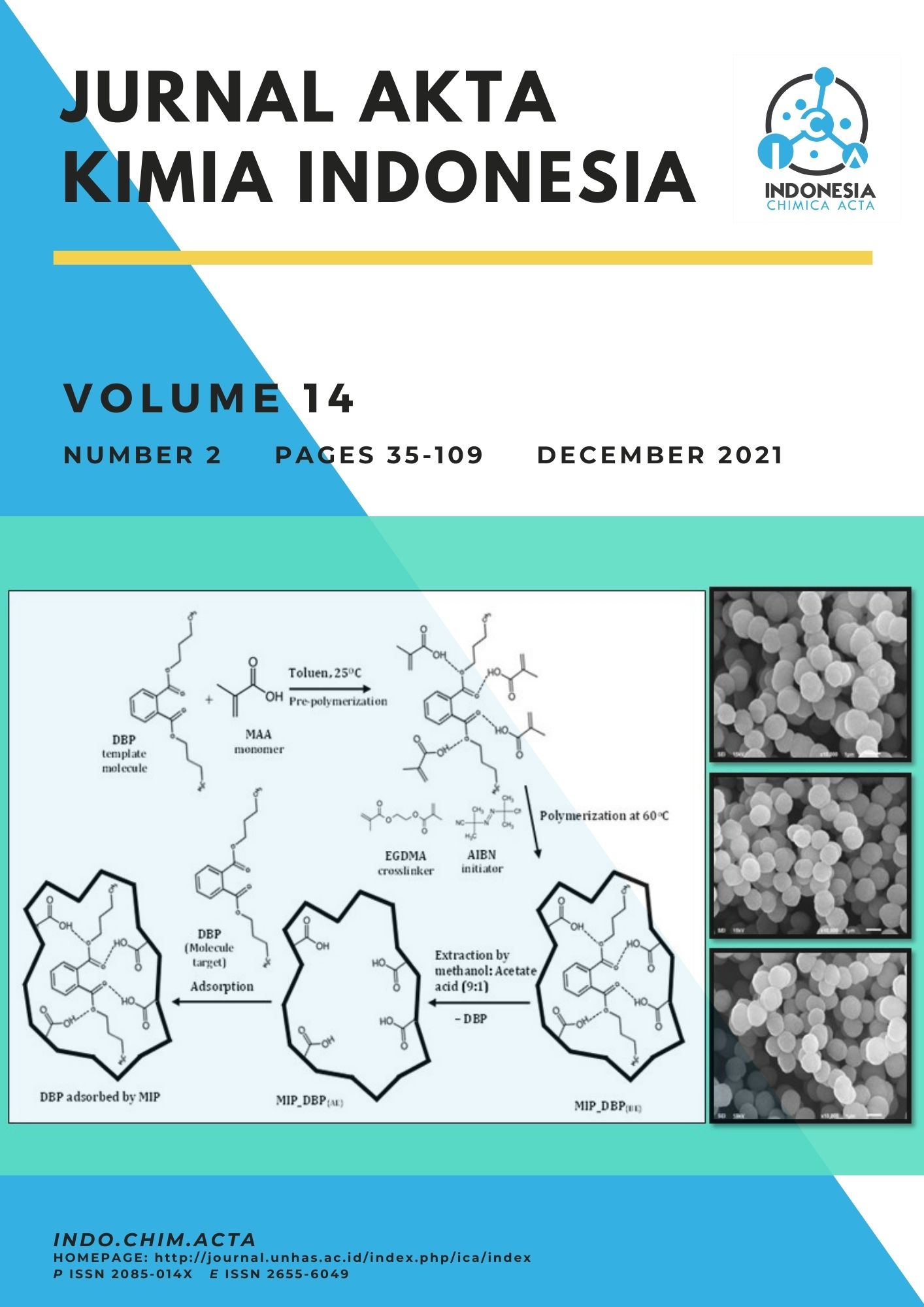Anti-free radical activity test of endophytic fungal fermentate extract on the Snake Plants (Sansevieria trifasciata Hort. Ex Prain) using the TLC-Autography method
Abstract
Degenerative diseases occur due to damage to cells, fat tissue, and the immune system caused by several factors. One theory that causes degenerative diseases is the presence of free radicals. The Snake plant is one of the plants in Indonesia that has long been known as a plant that is useful as anti-free radicals. The research was conducted by isolating and purifying endophytic fungi and determining the autogram profile of free antiradical activity from The Snake plant. From the purification results obtained 7 isolates, followed by macroscopic examination and fermentation of each isolate. The results of the screening test showed that 2 fermentates were active as anti-free radicals, namely AF 1 and AF 3. Fermentate isolates AF 1 and AF 3 were identified by TLC-autography using a mixture of n-hexane: ethyl acetate (7:1). TLC-autography test results by spraying DPPH isolates AF 1 and isolates AF 3 showed yellow spots on a purple background with Rf1 values of 0.90 and Rf2 of 0.2 in AF1 isolates and Rf1 values of 0.83 and Rf2 of 0.16 on AF3 isolates. potential as anti-free radicals. From the results of this study, it was concluded that there was anti-free radical activity in the Snake plant.
Authors
Copyright (c) 2021 Seniwati, Rusli, Adelia Fitrah, Tadjuddin Naid

This work is licensed under a Creative Commons Attribution-ShareAlike 4.0 International License.
This is an open access journal which means that all contents is freely available without charge to the user or his/her institution. Users are allowed to read, download, copy, distribute, print, search, or link to the full texts of the articles in this journal without asking prior permission from the publisher or the author.
Jurnal Akta Kimia Indonesia (Indonesia Chimica Acta) operates a CC BY-SA 4.0 © license for journal papers. Copyright remains with the author, but Jurnal Akta Kimia Indonesia (Indonesia Chimica Acta) is licensed to publish the paper, and the author agrees to make the article available with the CC BY-SA 4.0 license. Reproduction as another journal article in whole or in part would be plagiarism. Jurnal Akta Kimia Indonesia (Indonesia Chimica Acta) reserves all rights except those granted in this copyright notice.

